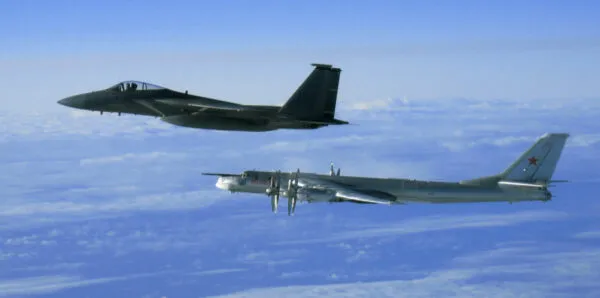On Friday, two Russian military planes were spotted and monitored as they entered the Alaska Air Defense Identification Zone (ADIZ). This marked the second time in a week that Russian aircraft were detected in the area, according to a statement from the U.S. military.

“The Russian aircraft remained in international airspace and did not enter American or Canadian sovereign airspace,” North American Aerospace Defense Command (NORAD) reported. “This Russian activity in the Alaska ADIZ occurs regularly and is not seen as a threat.”
The planes involved in Friday’s incident were Russian TU-142 aircraft, typically used for maritime surveillance and anti-submarine missions. Earlier in the week, on Wednesday, another pair of Russian aircraft had also been detected in the same area, though NORAD did not specify the type of aircraft involved in that instance.
It’s worth noting that the TU-142s are no strangers to these flights, often seen patrolling international waters near American borders. This time, the encounter, like many others, ended without any conflict. NORAD was clear in emphasizing that the event posed no immediate danger.
The Alaska ADIZ is an area of international airspace extending 150 miles from the U.S. coast. While it’s not part of U.S. territorial airspace— which starts 12 miles from the coast—the zone is a critical area where the U.S. monitors approaching aircraft to ensure the safety of the region. Regular monitoring in this zone helps maintain the security and sovereignty of U.S. and Canadian borders, as both countries cooperate closely in these defense efforts.
In a similar incident back in July, U.S. and Canadian fighter jets had to respond to four bombers from Russia and China flying near Alaska, but they too remained in international airspace.
NORAD’s detection systems are on constant alert, scanning the skies for any potential threats. It’s part of their daily routine to keep an eye on international airspace and quickly assess if any situation requires a more active response. Though these events occur often, the system in place ensures that all activity is carefully monitored to prevent any airspace violations.
In this latest detection, there were no signs of the Russian planes veering into U.S. or Canadian sovereign territory. It serves as a reminder of the strategic back-and-forth between global powers, where surveillance missions and territorial monitoring remain a consistent part of international military operations.
This pattern of Russian aircraft entering the Alaska ADIZ isn’t unusual. These maneuvers happen regularly, and NORAD is well-prepared to track and handle each one as it arises.
In the case of Wednesday’s detection, NORAD did not release specific details regarding the type of aircraft. However, it’s clear that these occurrences are routine and expected. The cooperation between the U.S. and Canada within NORAD ensures that both nations remain vigilant in securing their airspace.
The message remains the same—while these flights are tracked closely, they are not considered a direct threat. NORAD, with its joint U.S. and Canadian defense initiatives, continues to operate smoothly, monitoring for any signs that may warrant further action.
As global powers maintain their military presence in international waters and skies, it’s critical for defense systems like NORAD to stay vigilant. For now, these flights are reminders of the ongoing presence of other nations near U.S. borders, but with no signs of hostility, they remain part of the normal operations in the region.



